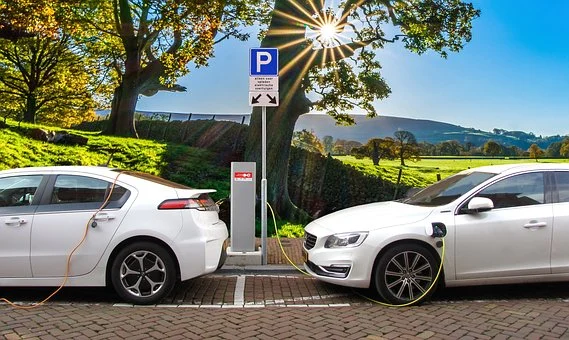What You Need to Know About the Environmental Cost of Public EV Charging
By Jane Marsh
Electric vehicles (EVs) are all the rage nowadays. As the effects of climate change become more noticeable, people are more enthused about finding options to combat it. Renewable energy, recycling, and cars that operate without fossil fuels are all ways communities worldwide are helping the environment.
The key facet of EVs is they recharge instead of using gas, but public charging could have more of a toll than many anticipate. Here are some things holding EVs back from being truly environmentally friendly and potential solutions.
What Makes Public EV Chargers Questionable
Public chargers will likely become as ubiquitous as gas stations are now, but are they a good thing? The answer is more nuanced than you might initially think.
Of course, the world will need public charging stations if EVs are going to replace gas-powered cars entirely. You might need power to get home or your car will start running low on a road trip. There are plenty of scenarios where someone must use a public charger. However, problems arise when people start using them as their only source of battery power rather than a backup.
If you’re committed to clean electricity, you likely have a renewable source of power generation, like a solar panel system. However, that’s not the case for the rest of the community. According to the U.S. Energy Information Administration, the country created over 4 trillion kilowatt hours of electricity in 2022, but 60% used fossil fuels. Just over 20% of power creation comes from renewable sources, even as they start to grow in use.
Additionally, people who use public chargers usually charge their cars to 100%, which can damage the battery. Most EV batteries use some form of lithium, and the practices of mining it are not currently environmentally friendly. Creating a lithium battery releases over 70% more CO2 than gas cars, and mining it requires 500,000 liters of water. Thus, replacing your EV’s battery multiple times in its life span harms the Earth.
Is Clean Public EV Charging Possible?
Clean public EV charging is within the world’s grasp — as long as more countries switch to renewable energy. Electricity is the second largest source of pollution, only outpaced by transportation. The rate of electricity-based pollution will rise as long as most power comes from fossil fuels.
The most eco-friendly option is to charge your car in your house. While you might have a slower charger at home than what would be available in a public space, you have more control over what kind of power you use. Even if you don’t have a renewable energy system, you can better track how long you use the charger and avoid clogging public stations.
About 60% of Americans worry about being unable to find a charging station while away from home, a major reason they don’t want to buy an EV. If you rely on public chargers less, you’ll help keep a greater number of alternate options. Other drivers will be able to find a usable charger more readily — possibly easing drivers’ worries and encouraging them to make the switch.
Renewable energy will likely become the norm someday. After all, the Earth will eventually run out of fossil fuels, and people will have to find alternate power generation sources. Then, public charging will become entirely clean. However, until that happens, try to utilize your home charger — or get one installed as soon as possible.
An Alternative Option for Widespread Charging
Innovators are exploring various ways to relieve range anxiety. Making public charging stations faster and more common will be the most significant relief. However, a road that repowers a vehicle as it drives is becoming an intriguing possibility.
It might sound impossible, but real-life examples of roads that charge cars already exist. Sweden created a 1.2-mile stretch of charging roadway by combining an electric rail with the street. The country plans to expand on this idea by making the 13 miles between Ӧrebro and Hallsberg electric as well. Though it won’t be done until 2025, the final product will be an exciting template for future charging highways.
This big change will eliminate range anxiety, as everyone could charge their cars without having to find a station. Such a significant relief might be the boost the EV market needs to become a leader in the transportation sector.
Public EV Charging Is Necessary but Not Always the Best
Using a public EV charger when you need to is certainly not a bad thing. There will be times you have to go somewhere to power your car back up. However, relying on it as your only charging method has an unintentional toll on the environment. Until the world switches to renewable energy, public EV charging isn’t as sustainable as you might like, although it’s certainly a step in the right direction.
Article by Jane Marsh
Jane works as an environmental and energy writer. She is also the founder and editor-in-chief of
